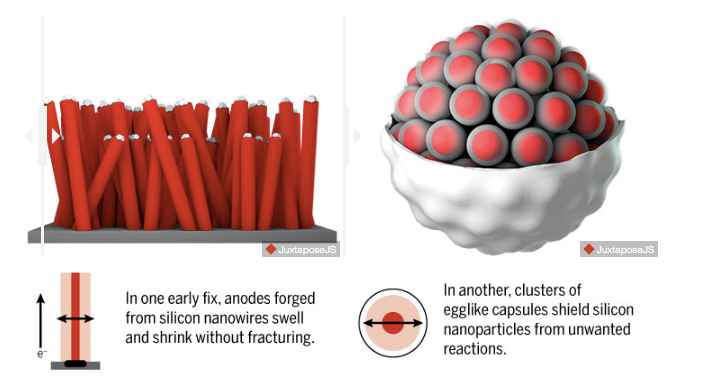For at least six years, the Californian company Amprius has been working on a promising battery technology that will significantly increase batteries’ energy density. A new technology based on silicon anodes that are managing to increase the potential of batteries substantially is already being manufactured.
These are currently being used in applications such as mobile devices for large Asian manufacturers and the Airbus High Altitude Satellite (HAPS) project, and allow a 10% improvement in available capacities. But in an interview with Science magazine, Yi Cui, CEO, and founder of Amprius has confirmed the enormous advances that will skyrocket this system’s potential.
As we recall, Amprius works to stabilize the silicon at the anode using silicon nanowires, overcoming the stability problems that the excellent silicon presents, such as its tendency to undergo fractures and the consequent deterioration of the anode during the charging and discharging processes.
The nanowire structure made it possible to exploit the potential of this material better, a generous lithium-ion accumulation capacity that raises the anode capacity to 1,000 mAh/g compared to the 372 mAh/g of the graphite anodes in use, being able to reduce the size of this electrode considerably and thus increasing the specific energy.

In a series of laboratory demonstrations, Cui has shown how his structural approach to electrodes can deal with a series of chemistries that have long plagued researchers. These include the popular lithium batteries with silicon electrodes instead of graphite, batteries with a lithium-metal electrode, and also those that rely on lithium-sulfur chemistry, which is potentially more potent than any lithium battery.
The nanoscale structures that Amprius is exploring include silicon nanowires that expand and contract as they absorb and eject lithium ions, plus small egg-like structures with layers of carbon that protect the lithium-rich silicon yolks.
The latest works have resulted in prototypes with 40% more energy density than current lithium batteries and, with still a long way to go for improvement, which according to the founder of Amprius, could result in batteries with 10 times higher density energy than the current ones. Something that would mean reaching over 1,000 Wh/kg.

This week’s technology has also jumped to the present time. In an image shared by Tesla during an event with shareholders and investors, where a structure that some experts have identified with a system of silicon nanowires that, in addition to high energy density, was also visible and will offer a much longer life to such batteries.
The most exciting thing is that there have been dates of arrival of this new technology from Tesla, which will allow increasing the energy density of the current cells by 50% and begin their production between 2023 and 2024.

